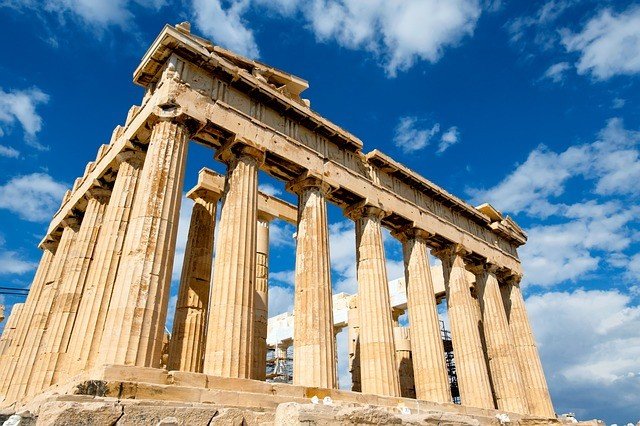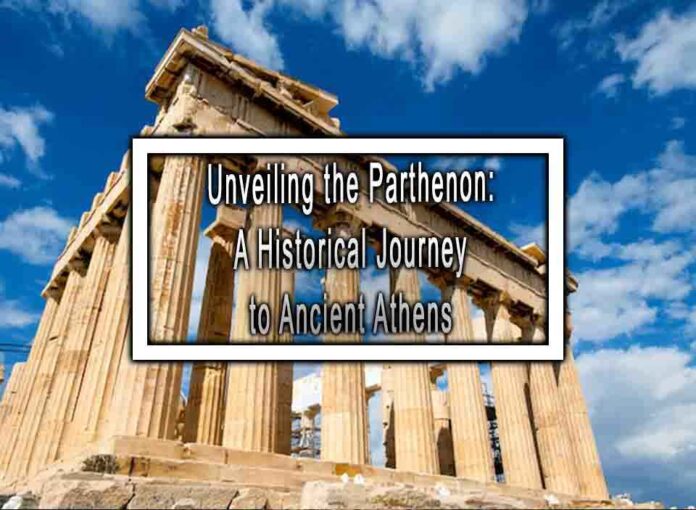The Parthenon, located atop the Acropolis in Athens, Greece, is one of the most iconic and well-preserved ancient temples in the world. This historical journey to Ancient Athens unveils the significance and legacy of the Parthenon:
Construction and Purpose:
- Ancient Greece: The construction of the Parthenon dates back to the 5th century BCE during the Golden Age of Athens, particularly during the leadership of statesman Pericles.
- Architects: The temple is attributed to the architect Iktinos and his assistant Callicrates, with oversight by the sculptor Phidias, who created the famous statue of Athena Parthenos that once stood inside.
- Dedication to Athena: The Parthenon was dedicated to the goddess Athena Parthenos, the patron deity of Athens, and served as a temple to house her statue. It was part of the larger Acropolis complex, which included other religious and civic buildings.
Architectural Significance:
4. Doric Order: The Parthenon is an exemplary example of the Doric architectural order. It features a peripteral colonnade (columns surrounding the cella or inner chamber) with eight columns on the façade and seventeen on the flanks.

- Optical Refinements: The temple incorporates various architectural refinements to counteract optical illusions and make the structure appear more symmetrical. For example, the columns have slight entasis (a convex curvature) and lean slightly inward.
- Pediment Sculptures: The Parthenon’s pediments once featured intricate sculptural compositions depicting mythological narratives, such as the birth of Athena on the east pediment and the contest between Athena and Poseidon on the west pediment.
- Frieze and Metopes: The frieze of the Parthenon displayed a continuous narrative of the Panathenaic procession. The metopes on the exterior depicted various mythological and historical scenes.
Cultural and Historical Impact:
8. Symbol of Democracy: The Parthenon symbolizes the birthplace of democracy and the cultural achievements of Ancient Greece. It stands as a testament to the intellectual and artistic advancements of the time.
- War and Destruction: Over the centuries, the Parthenon faced challenges, including damage during the Peloponnesian War and conversion into a Christian church in the Byzantine era.
- Elgin Marbles: In the early 19th century, many sculptures from the Parthenon, known as the Elgin Marbles, were removed by Lord Elgin and are now housed in the British Museum in London, sparking ongoing debates about their repatriation.
The Parthenon’s enduring legacy lies not only in its remarkable architecture but also in its representation of ancient Greek culture, democracy, and artistic achievement. It continues to stand as a symbol of Athens and a testament to the enduring influence of Ancient Greece on the world.










